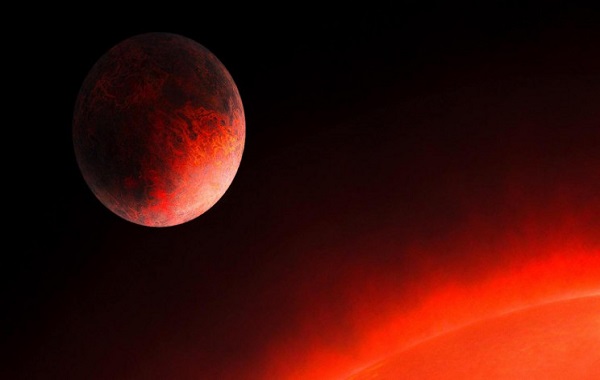A Newly-Discovered Planet Might Be Covered in Seas of Molten Iron
And its years last less than 8 hours.
An international team of astronomers led by Germany’s DLR Institute of Planetary Research discovered a new exoplanet that is 80 percent composed of iron, making it incredibly similar to Mercury, a press statement reveals.
One startling difference, however, sets the two planets apart. The newly-discovered planet, called GJ 367b, orbits so close to its star that its surface is likely a sea of molten iron. The proximity is so close, in fact, that the planet’s year lasts just under eight hours.
One of the lightest exoplanets ever found
The new planet was discovered by NASA’s Transiting Exoplanets Survey Satellite (TESS) mission, which alerts astronomers when the light coming from a given star periodically decreases. More often than not, this decrease in starlight is caused by a planet orbiting the star and blocking out some of the light that would otherwise reach the satellite. The TESS mission spotted the new planet orbiting a red dwarf star called GJ 367, located roughly 30 light-years from Earth.
GJ 367b has a radius only three-quarters the size of Earth’s (roughly 5,700 miles across), though it has a mass over half that of Earth. Its mass means it is one of the lightest of the nearly 5000 exoplanets discovered so far, DLR explains in its statement. Like the moon with Earth, the planet is tidally locked to its host star, meaning it rotates once per orbit and it has a dark side that constantly faces outward.
Searching for a ‘second Earth’
The researchers, who published their findings in the journal Science, say the new discovery brings us a step closer to finding another planet with the same livable conditions as Earth. “From the precise determination of its radius and mass, GJ 367b is classified as a rocky planet,” explains DLR’s Kristine Lam, one of the authors of the study. “It seems to have similarities to Mercury. This places it among the sub-Earth sized terrestrial planets and brings research one step forward in the search for a ‘second Earth’.”
However, the team does highlight the fact that the planet’s surface reaches “a temperature at which all rocks and metals would be melted.” This means that GJ 367 b itself “cannot be considered a ‘second Earth’.”
The team of researchers made their findings in part by running the TESS data through a machine learning program. The program estimated that GJ 367b’s structure is incredibly similar to that of Mercury, with the planet being largely composed of a metallic core. It also has an outer crust of metal and silicon-rich rocks, which also melt at similar temperatures. So we’ve previously seen an exoplanet where it rains liquid iron, now add a planet whose surface is likely composed of molten seas of iron that list.
Source: Interesting Engineering
Over 350 Exoplanets Have Been Found, Bringing Us Close to an Incredible Milestone
Over 350 Exoplanets Have Been Found, Bringing Us Close to an Incredible Milestone
A Newly-Discovered Planet Might Be Covered in Seas of Molten Iron

